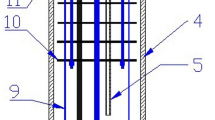Abstract
The system NaF-AlF3 constitutes the main part of the electrolyte used in primary aluminum production. While it is generally accepted that molten NaF-AlF3 contains Na+, F−, and a number of fluoro-aluminate anion complexes, the detailed structure of the melt is still disputed. In the current study, five structure models, which all contained five anionic entities and Na+ as the only cation, were examined. The activities of NaF(l) and AlF3(s) as computed from ideal Temkin models were compared with the formal activities. The structure models were also used to study the conditions at the cathode. The current is carried by Na+; hence, there is a net diffusion flux of aluminum-containing species toward the cathode. The individual ion fraction gradients and fluxes were computed, based on the Stefan–Maxwell equations for transport in a multicomponent system and the prerequisite that the ionic species should be at equilibrium at any point. The five structure models tested showed similar behavior. The change in the NaF/AlF3 ratio across the boundary layer was almost equal for the four models, while the cathodic concentration overvoltage varied from 81 to 112 mV. The results give no reasons for preferring one structure model above the other.






Similar content being viewed by others
References
E.W. Dewing: Metall. Trans.., 1972, vol. 3, pp. 499-505.
K. Grjotheim, C. Krohn, M. Malinovsky, K. Matiasovsky, and J. Thonstad: Aluminium Electrolysis. Fundamentals of the Hall-Heroult Process, Aluminium-Verlag, Düsseldorf, 1982.
J. Thonstad, P. Fellner, G.M. Haarberg, J. Hives, H. Kvande, and Å. Sterten: Aluminium Electrolysis. Fundamentals of the Hall-Heroult Process, Aluminium-Verlag, Düsseldorf, 2001.
A. Solheim: Proc. TMS-AIME, Light Met., 2014, pp. 753-758.
A. Solheim: Proc. TMS-AIME, Light Met., 2012, pp. 665–670.
A. Solheim and Å. Sterten: Proceedings of the Tenth Al-Symposium, Slovak-Norwegian Symposium on Aluminium Smelting Technology, Stara Lesna, Slovakia, 1999, pp. 13–20.
A. Solheim and Å. Sterten: Proceedings of the Ninth International Symposium on Light Metals Production, Tromsø-Trondheim, Norway, 1999, pp. 225–34.
A. Solheim and Å. Sterten: Proc. TMS-AIME, Light Met., 1999, pp. 445–52.
P. Fellner, J. Híveš, and J. Thonstad: Proc. TMS-AIME, Light Met., 2011, pp. 513–16.
J.T. Welty, C.E. Wicks, and R.E. Wilson, Fundamentals of Momentum, Heat, and Mass Transfer, Wiley, New York, 1984.
A. Solheim: Aluminum Transactions, 2000, vol. 2, pp. 161-168.
Acknowledgments
This work was supported by the project “Sustainable Production and Recycling of Metals” (SUPREME) financed by the Research Council of Norway and Hydro Aluminium, Boliden, Xstrata Nickel, and Permascand.
Author information
Authors and Affiliations
Corresponding author
Additional information
Manuscript submitted November 13, 2014.
Rights and permissions
About this article
Cite this article
Solheim, A. Mass Transfer at the Cathode in Alumina Reduction Cells: Behavior of Different Structure Models for NaF-AlF3 Melts. Metall Mater Trans B 46, 1982–1989 (2015). https://doi.org/10.1007/s11663-015-0378-y
Published:
Issue Date:
DOI: https://doi.org/10.1007/s11663-015-0378-y




